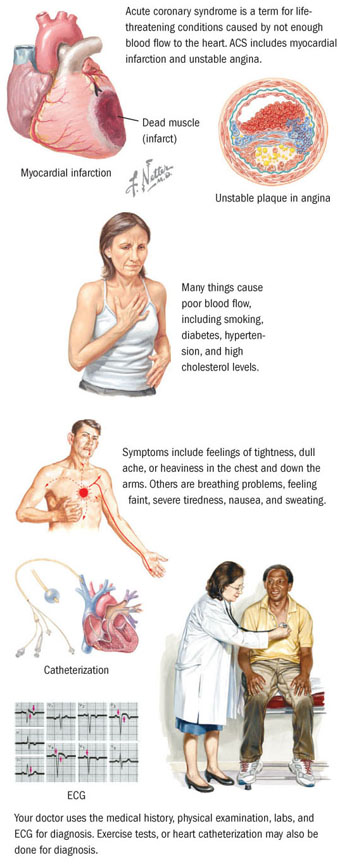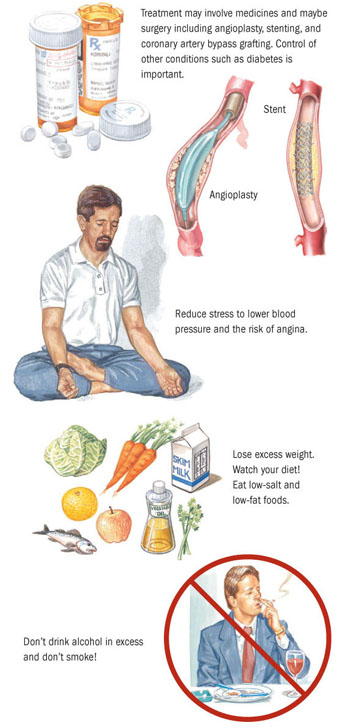
Acute coronary syndrome (ACS) is a term for several life-threatening conditions caused by not enough blood flow to the heart. Myocardial infarction (heart attacks) and unstable angina are part of ACS. In myocardial infarctions, some of the heart muscle dies because it doesn’t get enough blood. In unstable angina, heart-related pain occurs during rest.
The cause is poor blood flow and not enough oxygen getting to the heart muscle. Low blood flow to the heart from coronary artery disease may be caused by atherosclerosis or vessel spasms. Atherosclerosis is scarring and fatty deposits in blood vessels. Coronary arteries are vessels that take blood to the heart. Abnormal heart valves and abnormal heart rhythms (arrhythmias) may also interfere with blood flow to the heart and coronary vessels.
Anemia (low blood) can also lower blood flow to the heart.
Age (older than 55), family history of heart disease, smoking, being overweight, not enough exercise, diabetes, high blood pressure (hypertension), high cholesterol levels, and high-fat diet increase the risk of ACS.
Main symptoms include feelings of tightness, dull ache, or heaviness that begin in the chest and may go to the neck, left shoulder, and down the arms (especially left arm). Pain may start slowly or suddenly and may be dull or smothering or crushing, as if someone is sitting on the chest. Other signs and symptoms of ACS are breathing problems, feeling faint, severe tiredness, weakness, nausea, and sweating.

The health care provider starts with a medical history and physical examination. Tests for ACS may include electrocardiography (ECG, an electrical study of the heart), exercise stress test, ultrasonography, blood tests, and heart catheterization. In catheterization, a tube (catheter) is put through an artery into the heart to see whether the area is blocked.
Treatment involves getting more blood flow to the heart or reducing the work of the heart so it needs less blood. Medicines called nitrates (nitroglycerin) help blood flow. Drugs (such as beta-blockers) can treat hypertension and lessen the work of the heart by slowing down the heart rate.
Control of other conditions such as diabetes, high blood pressure, and high cholesterol levels is important. In some cases, surgery or other interventions may be needed to open blocked blood vessels. These procedures are angioplasty, placement of stents (mesh tubes), and coronary artery bypass grafting. In angioplasty, a balloon-like device opens blocked vessels.
Contact the following sources:
Copyright © 2017 by Saunders, an imprint of Elsevier, Inc.
Ferri’s Netter Patient Advisor